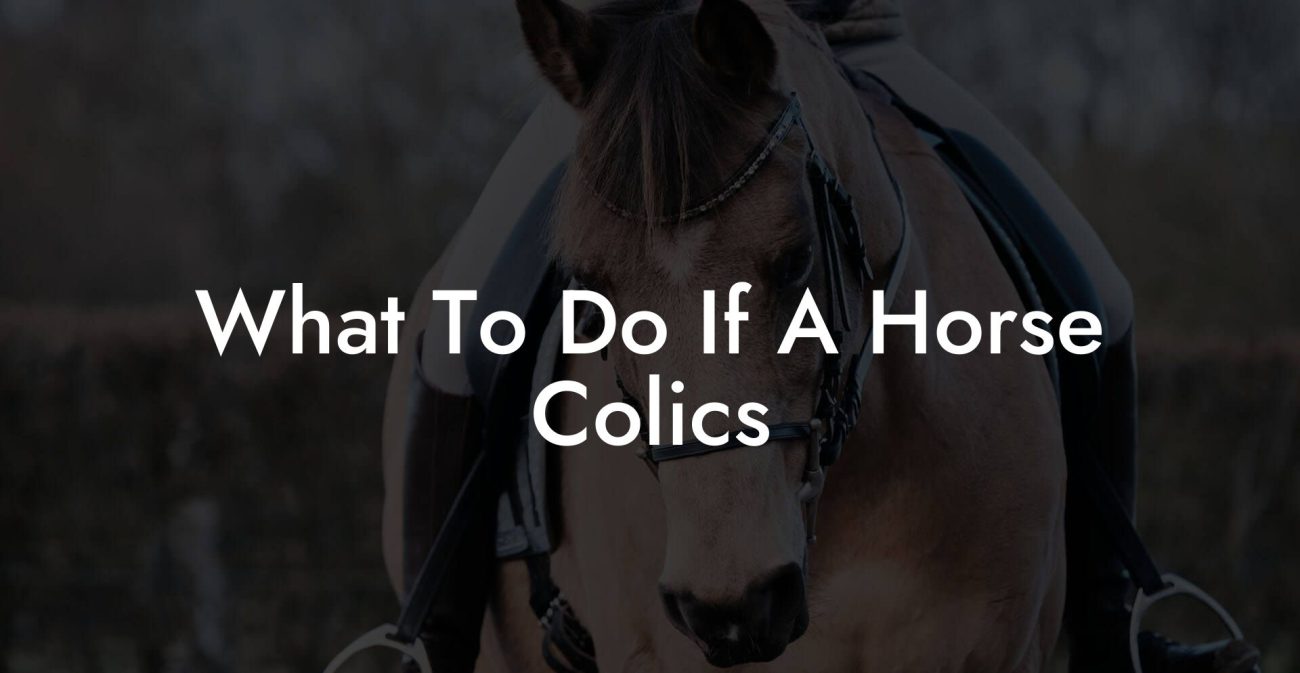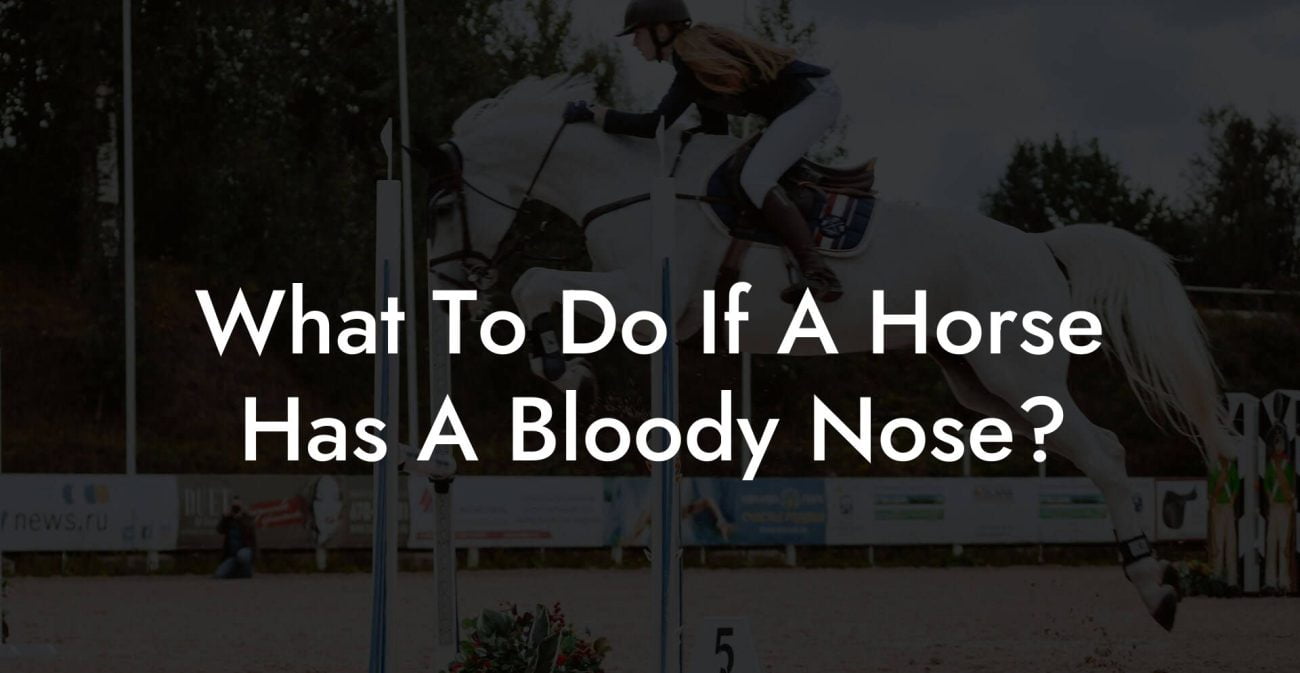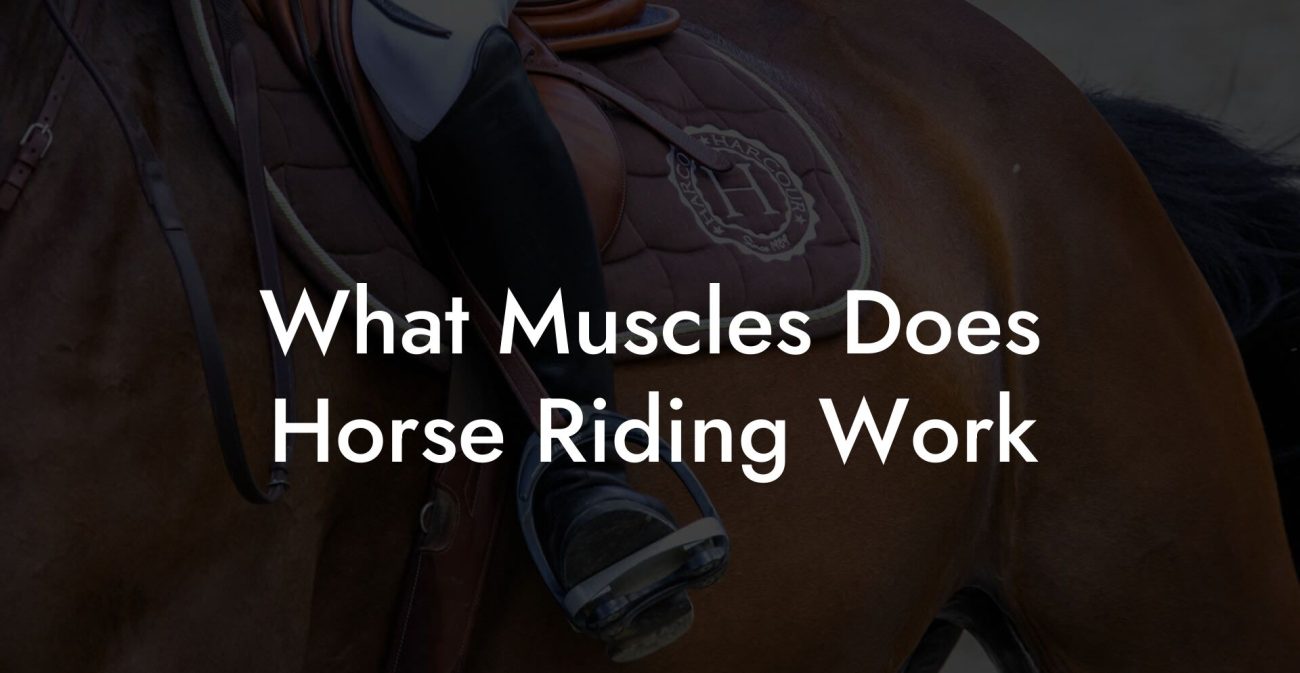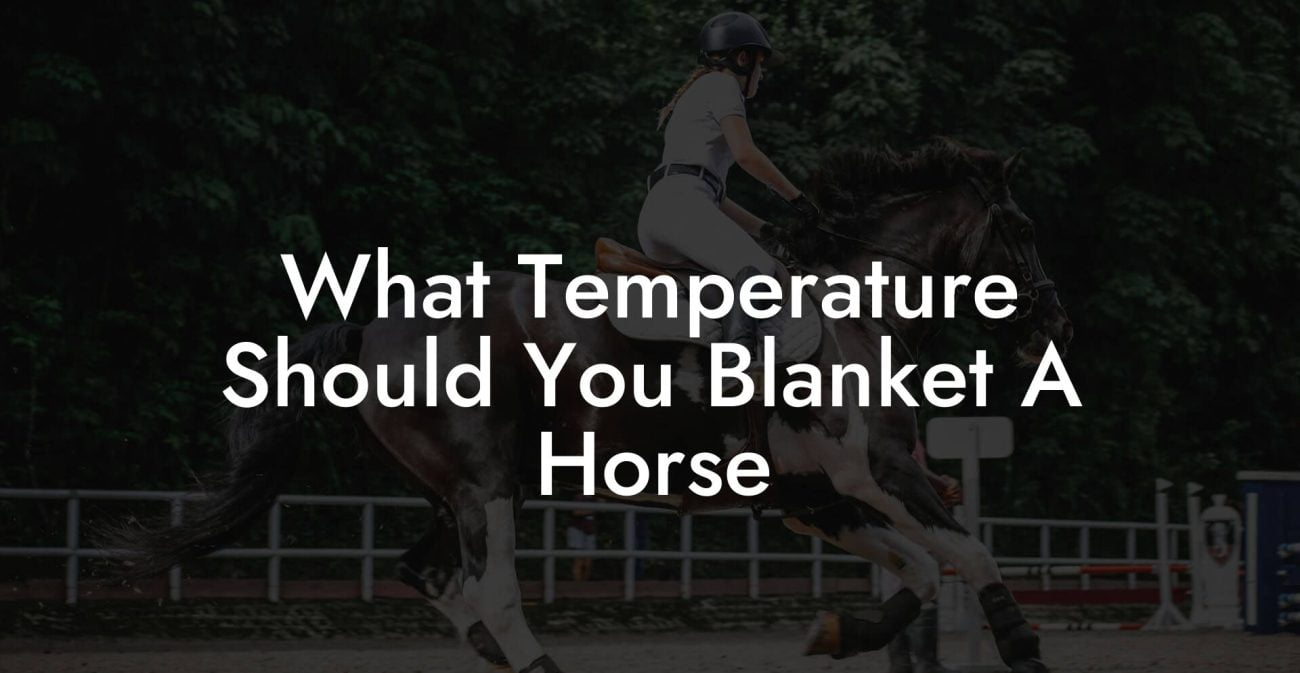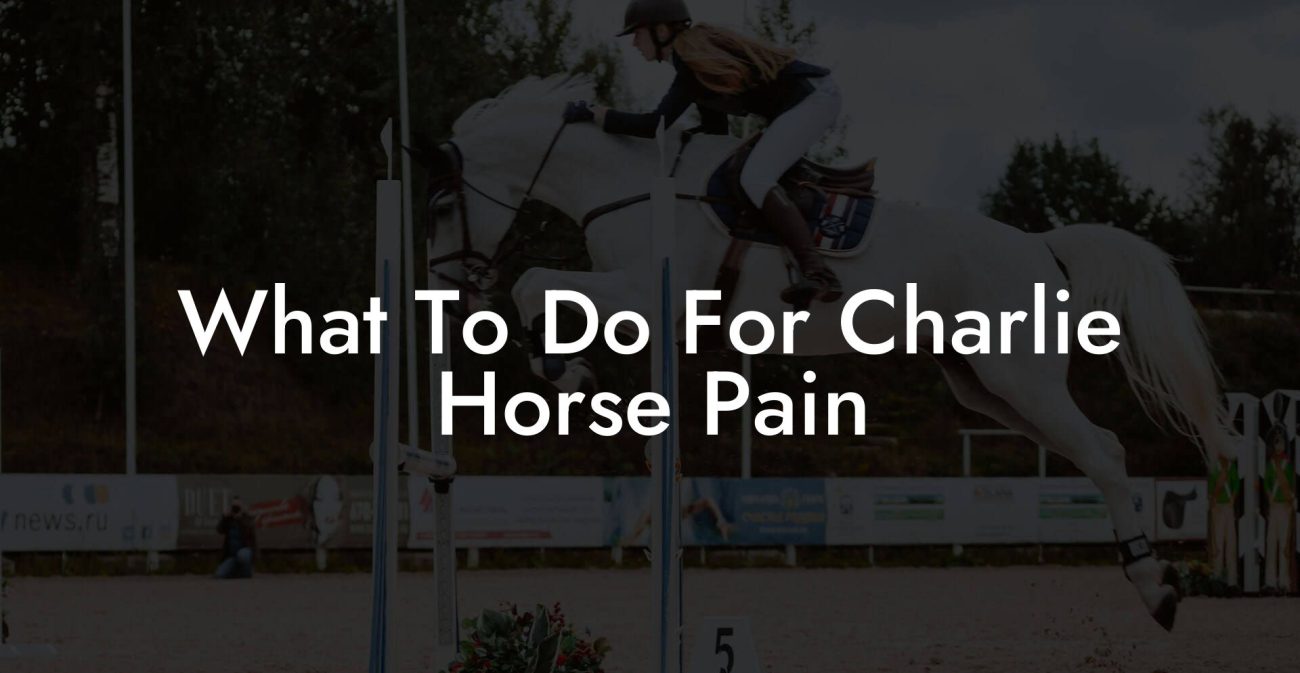In the realm of equestrian passion, there’s nothing quite like the thrill of mastering the art of caring for your majestic steed, especially if that steed happens to be a pale beauty with grace, mystery, and a personality all its own. This guide, "Pale Horse Rider," is your all-access pass to the world of modern horse care, blending old-school wisdom with fresh, Gen-Z and millennial-friendly insights. Whether you’re a seasoned equestrian or a curious newcomer ready to saddle up, you’re about to discover a universe full of hands-on tips, holistic strategies, innovative technologies, and a hearty dose of humor, all designed to help you and your equine partner thrive.
Quick Links to Useful Sections
- Defining the Modern Pale Horse Rider
- The Essentials of Horse Care: Building the Foundation
- Nutrition: Fueling Strength and Vitality
- Grooming: More Than a Pretty Coat
- Exercise and Training: Crafting a Winning Partnership
- stable Management: Creating a Haven for Your Horse
- Holistic Approaches to Equine Health: Beyond the Basics
- Integrative Equine Nutrition
- Equine Physical Therapy and Alternative Treatments
- Mind-Body Equine Practices
- Emotional and Social Well-Being
- Innovative Techniques for the Modern Equestrian
- Wearable Tech and Health Monitoring
- Digital Training Tools and Apps
- Sustainable and Eco-Friendly Practices
- Establishing a Balanced Routine: Merging Passion with Practicality
- Designing Your Daily Ritual
- Integrating Modern Tools for Time Management
- Real-Life Transformations: Case Studies in Modern Equestrian Care
- Case Study 1: The Renewal of a Rescued Beauty
- Case Study 2: A Digital Revolution in Training
- Case Study 3: The Journey to Sustainable Equestrian Living
- Tips and Tricks for Gen-Z and Millennial Equestrians
- Maximize Social Media to Share Your Journey
- Embrace Interactive Learning
- Connect with Like-Minded Communities
- Invest in Smart Gadgets
- Stay Informed and Inspired
- Resources and Community Support: Your Next Steps
- Frequently Asked Questions About Modern Horse Care
- Your Journey Toward Holistic, Empowered Equestrian Living
Defining the Modern Pale Horse Rider
The term “pale horse rider” conjures images of mysterious legends, solitary journeys, and epic adventures. But beyond the poetic imagery lies a vibrant, modern reality where horse care meets lifestyle. Today’s pale horse rider is not just someone who rides a striking, light-colored horse, they are connoisseurs of equine health, savvy trainers, and community-driven advocates for ethical care. These riders embrace both the aesthetics and the soulful bond they share with their horses, balancing tradition with innovative care routines that resonate with contemporary living.
At its core, being a pale horse rider means understanding that every horse is a living, breathing collection of habits and quirks, just as unique as the rider themselves. From nutrition and grooming to training and mental well-being, every aspect of horse care is intertwined. This comprehensive guide tackles each topic head-on, providing you with actionable advice and insider techniques that highlight the best practices for sustaining and elevating your equine companion’s life.
Whether your horse sports a coat as pale as moonlight or simply reflects your penchant for style and substance, the philosophy behind modern equine care calls for a harmonious mix of science, sustainability, and soul. Get ready to explore, laugh, learn, and most importantly, connect with your horse on a level you never thought possible.
The Essentials of Horse Care: Building the Foundation
Just like any well-rounded approach to life, quality horse care begins with the basics. For the modern pale horse rider, it’s all about understanding the physical, mental, and emotional needs of your horse. A deep dive into these essentials will provide you with the foundation you need to nurture a healthy, happy steed.
Nutrition: Fueling Strength and Vitality
A hearty, well-balanced diet is the lifeblood of any thriving horse. Just as we make mindful choices about what we eat, our four-legged friends benefit from a diet that meets their unique nutritional requirements. This means providing a mix of high-quality hay, grains, vitamins, and minerals, tailored to your horse’s age, activity level, and even its distinct coat color and personality.
Many modern equestrians swear by feeding routines that incorporate:
- High-quality forage: Ensure your horse has ample access to fresh grass or hay rich in essential nutrients.
- Balanced grains and supplements: Depending on energy needs, integrate grains and high-fiber supplements to support digestion.
- Hydration: Keep a constant, clean water supply to maintain muscle function and overall health.
Integrating these dietary essentials with periodic veterinary consultations ensures that your pal’s nutritional needs are met in a way that supports peak performance, vibrant coat health, and overall longevity.
Grooming: More Than a Pretty Coat
Grooming transcends the simple cleaning of a horse, it’s a sacred ritual that enhances the bond between rider and horse. For the pale horse rider, time spent grooming is also the time spent in mindful connection. Regular grooming routines keep your horse’s coat gleaming, help prevent skin issues, and stimulate natural oil production.
Key grooming tips include:
- Regular brushing: Use high-quality brushes to remove dirt and loose hair, paying special attention to areas prone to tangles.
- Bathing wisely: Too much water can be harmful; however, periodic baths with pH-balanced shampoos help maintain skin health and coat luster.
- Hoof care: Clean and inspect hooves daily, ensuring to remove debris and check for cracks or injuries. Scheduling routine farrier visits is vital for maintaining proper hoof balance.
This not only elevates the presentation of your pale steed but also promotes its overall well-being, turning a daily chore into an act of love and care.
Exercise and Training: Crafting a Winning Partnership
Just as any good fitness regimen invigorates the human body, an effective exercise and training routine revitalizes a horse’s muscles, joints, and spirit. Modern riders are turning to innovative training techniques that combine traditional groundwork with cutting-edge methods such as clicker training and body language communication.
Establish a daily routine that includes:
- Warm-ups and Cool-downs: Ensure that every exercise session begins with gentle stretching and ends with a gradual cool-down to prevent injuries.
- Varied exercises: Mix up your riding regimen with trail rides, arena work, and even ground training to stimulate your horse both physically and mentally.
- Positive reinforcement: Using treats, praises, and sometimes even quirky sounds or memes can enhance your horse's learning and create a more fun training environment.
By incorporating these training regimes, you not only enhance your horse’s physical agility but also develop a trusting, mutually respectful bond that is the hallmark of every great pale horse rider.
stable Management: Creating a Haven for Your Horse
A clean, well-organized stable is as important to your horse as your morning coffee is to you. Effective stable management covers everything from proper ventilation and bedding to routine cleaning and safety checks. For the modern rider, this means leveraging technology and modern design to create a space that is both aesthetically pleasing and practically efficient.
Consider the following stable management strategies:
- Regular cleaning: Ensure that stalls are swept daily, and bedding is changed frequently to reduce the risk of infections.
- Temperature and ventilation control: Use fans, windows, and automated systems to maintain an environment that is comfortable and safe.
- Technological integration: Equip your stable with digital monitoring systems for temperature, humidity, and even security cameras to keep a vigilant eye on your equine friend.
These practices not only maintain a clean, healthy environment for your pale horse but also reflect your commitment to the overall welfare of your cherished companion.
Holistic Approaches to Equine Health: Beyond the Basics
As with many aspects of modern life, effective horse care in the 21st century is about blending proven traditions with innovative, holistic practices. Holistic equine care encompasses physical health, mental stimulation, and even spiritual well-being. For riders who see their horse as a partner rather than just an animal, this perspective can transform daily care into a journey of mutual growth.
Integrative Equine Nutrition
When it comes to feeding your pale horse, integrative nutrition is a game-changer. It’s about moving beyond basic feed and hay routines to incorporate superfoods, natural supplements, and even herbal infusions into its diet. Consider working with an equine nutritionist who can help design a balanced diet that takes into account seasonal changes, specific health conditions, and the unique energy needs of your horse.
Nutritional strategies may include:
- Herbal supplements: Ingredients like turmeric, ginger, and garlic are believed to have anti-inflammatory properties that can improve digestion and overall wellness.
- Customized feeding schedules: Synchronizing your horse’s meals with its natural circadian rhythms can boost metabolism and enhance nutrient absorption.
- Fermented feeds: Introducing naturally fermented feeds helps promote a healthy gut flora, which is essential for digestive health.
By tailoring your horse’s diet to its specific needs, you ensure that it has all the energy, strength, and resilience required for the varied demands of a modern riding lifestyle.
Equine Physical Therapy and Alternative Treatments
Just as humans embrace physical therapy to relieve pain or maintain fitness, horses too benefit from specialized treatments that address injuries, muscle stiffness, and chronic discomfort. Techniques such as massage therapy, acupuncture, chiropractic adjustments, and even hydrotherapy sessions are becoming increasingly popular among riders who demand holistic care for their equine companions.
These alternative treatments not only help in injury recovery but also promote overall mobility and flexibility. Regular sessions can help reduce inflammation, improve blood circulation, and decrease stress levels, allowing your horse to move freely and gracefully, whether trotting across an arena or galloping along a scenic trail.
Mind-Body Equine Practices
Horses are incredibly perceptive creatures, capable of picking up on subtle cues from their environment and their rider’s emotions. Integrative mind-body practices for horses emphasize reducing stress while enhancing mental clarity and responsiveness. Techniques such as guided relaxation, quiet time in nature, and even equine yoga (yes, that’s a thing!) can promote better overall health.
For the dedicated rider, incorporating mind-body practices means scheduling moments of calm where both you and your horse can enjoy quiet, reflective time together. This fosters trust, improves communication, and offers a welcome respite from the rigorous demands of daily training or competition.
Emotional and Social Well-Being
Modern equine care recognizes that horses, too, have emotional lives. As natural herd animals, social interactions with other horses and gentle human contact are critical for a horse’s psychological balance. Creating opportunities for social play, whether at turnout or during group training sessions, keeps your horse engaged and emotionally fulfilled.
Many riders leverage technology and creative design to add a layer of environmental enrichment to their stables. This may involve varied terrain in pastures, interactive toys, or even stress-relief music designed specifically for horses. Recognizing and nurturing your horse’s emotional needs is key to fostering an enduring, loving bond.
Innovative Techniques for the Modern Equestrian
The golden age of equestrian care is well underway, with technology and innovation playing pivotal roles in equine management. Today’s pale horse rider isn’t just riding the trends, they’re actively shaping the future of horse care with tools and techniques that blend convenience, science, and creativity.
Wearable Tech and Health Monitoring
Imagine having a Fitbit for your horse! Modern wearable devices now allow riders to monitor vital stats such as heart rate, temperature, and activity levels in real time. These gadgets provide invaluable data that can help detect early signs of health issues, tailor training sessions, and even optimize nutritional plans.
With user-friendly mobile apps and cloud-based storage, tracking your horse’s performance has never been easier. Integrate these technologies into your daily care routine for proactive health management, ensuring that your pale horse remains in peak condition whether it’s competing in events or hitting the trails.
Digital Training Tools and Apps
Gone are the days of relying solely on traditional riding manuals and in-person coaching sessions. Digital training platforms offer interactive tutorials, video-guided exercises, and even virtual reality simulations to enhance your riding skills and your horse’s responsiveness. These resources empower you to learn at your own pace while staying connected with expert trainers around the world.
Whether you’re brushing up on advanced dressage techniques or exploring the basics of natural horsemanship, these digital tools are an invaluable asset for the modern pale horse rider. They make learning fun, accessible, and perfectly in tune with the fast-paced digital lives of Gen-Z and millennial riders.
Sustainable and Eco-Friendly Practices
As environmental consciousness grows, so does the drive to adopt sustainable practices in the equine world. From eco-friendly stable cleaning products to solar-powered barn lights, every little effort contributes to a healthier planet. Many riders are now exploring organic feed options, biodegradable grooming products, and eco-conscious stable designs that reduce environmental footprint while enhancing animal welfare.
Embracing sustainability not only benefits the planet but also enriches the ethos of being a pale horse rider, a commitment to long-lasting care that respects nature, promotes health, and sets a positive example for future generations.
Establishing a Balanced Routine: Merging Passion with Practicality
At the heart of successful horse care lies a reflection of the balance between passion and practicality. As a pale horse rider, carving out time for every aspect of your horse’s care, from precise nourishment and grooming routines to high-energy training sessions and mindful downtime, requires a well-structured, yet flexible, daily schedule.
Designing Your Daily Ritual
Start your day with a quick health check on your horse. A brief grooming session, coupled with nutritional preparations and a review of workout goals, sets a proactive tone for the day. Allocate time for outdoor exercise, alternating between vigorous riding and leisurely trail walks that stimulate both body and mind.
Incorporate mindfulness sessions into your routine. Whether it’s a few minutes of quiet bonding in the pasture or a guided meditation session geared toward relaxation for both you and your horse, these moments of calm are essential. They help curb stress and strengthen your connection with your equine partner.
Don’t forget to set aside time each day for stable management tasks, cleaning, feeding, and ensuring that every inch of your horse’s living area is safe, comfortable, and inspiring. By making these activities part of your daily ritual, you create a predictable rhythm that benefits both you and your equine friend.
Integrating Modern Tools for Time Management
With a myriad of digital scheduling apps and smart devices designed to optimize your time, balancing horse care with work, study, and a vibrant social life has never been more manageable. Use digital calendars paired with reminder apps to stay on top of feeding times, workout sessions, and even farrier appointments. The goal is to create a seamless fusion of tradition and technology that complements your busy lifestyle.
For those days when you’re pressed for time, consider batch prepping meals and grooming products to maximize efficiency. The modern pale horse rider leverages every tool at their disposal to create a harmonious, structured, yet dynamic routine.
Real-Life Transformations: Case Studies in Modern Equestrian Care
Stories have a way of inspiring change, and the equestrian world is brimming with transformative journeys that celebrate innovation, determination, and the deep bonds between rider and horse. These case studies capture the essence of modern horse care, demonstrating how integrating holistic practices with traditional techniques can yield outstanding results.
Case Study 1: The Renewal of a Rescued Beauty
After a challenging rescue story, Luna, a pale, exquisitely gentle mare, found herself in the care of a passionate rider determined to transform her life. By meticulously blending conventional veterinary care with integrative therapies such as acupuncture and massage therapy, Luna gradually blossomed from a timid rescue into a graceful, confident competitor. Her caregiver’s innovative regimen, featuring digital health monitoring, organic feed, and mindful, daily grooming rituals, proved that compassion, when paired with modern techniques, can unlock latent potential.
Today, Luna stands as a testament to the profound journey of healing, trust, and transformation, reminding every pale horse rider that every challenge carries the promise of renewal.
Case Study 2: A Digital Revolution in Training
Meet Orion, a striking pale stallion whose spirited nature was once a challenge to harness, until his rider embraced a tech-savvy transformation. Integrating wearable health devices and interactive training apps with traditional riding methods, his caregiver created a data-driven training plan that balanced rigorous physical exercises with innovative virtual tutorials. Over time, Orion’s performance in competitive show jumping improved dramatically, proving that digital transformation in equine care isn’t just for humans.
This case study highlights how modern equestrians are leveraging technology to optimize performance, streamline training, and build stronger, more intuitive communication with their horses.
Case Study 3: The Journey to Sustainable Equestrian Living
For many, sustainability isn’t just a buzzword, it’s a lifestyle choice. Amber, a dedicated rider and environmental advocate, overhauled her stable operations to reflect eco-friendly practices. From installing solar-powered barn lighting to sourcing biodegradable grooming supplies and organic feed, her transformation created a green oasis that set a new benchmark for responsible horse care.
Amber’s story inspires riders to merge passion with purpose, proving that caring for your horse doesn’t have to come at the cost of the environment. It’s all about making informed, sustainable choices that benefit both your equine partner and the planet.
Tips and Tricks for Gen-Z and Millennial Equestrians
In today’s fast-paced world, the equestrian lifestyle is evolving to meet the demands of a generation that values authenticity, creativity, and digital innovation. Here are some unique tips and tricks tailored for Gen-Z and millennial riders eager to embrace modern horse care:
Maximize Social Media to Share Your Journey
Document your horse care adventures, whether it's a quirky grooming mishap, a triumphant training breakthrough, or a peaceful moment in the stable, and share these snapshots on Instagram, TikTok, or your favorite platform. Authentic storytelling not only builds community but also encourages others to explore sustainable, integrative horse care practices.
Embrace Interactive Learning
Seek out online tutorials, webinars, and virtual workshops hosted by equine professionals. Platforms like YouTube and specialized equestrian apps offer masterclasses that can help you refine your techniques, learn new training methods, and stay up-to-date on the latest advances in horse care.
Connect with Like-Minded Communities
Join forums, social media groups, or local clubs where you can share experiences, ask questions, and even swap eco-friendly stable tips. These communities serve as support networks that enrich your journey as both a rider and a caretaker.
Invest in Smart Gadgets
Modern technology isn’t just for tracking your steps; it’s reshaping how we care for our horses. Invest in smart wearables, automated feeders, or even apps that schedule your daily tasks, so you can spend less time fretting over logistics and more time forging an unbreakable bond with your horse.
Stay Informed and Inspired
Whether through podcasts, blogs, or YouTube channels dedicated to equestrian lifestyle and wellness, keep learning and evolving. Staying informed means you’re always one step ahead, ensuring that your horse care practices are as innovative as they are effective.
Resources and Community Support: Your Next Steps
Embarking on a journey as a pale horse rider is both exhilarating and deeply rewarding. Fortunately, you’re not alone, there’s a vibrant community of equestrian enthusiasts, professionals, and innovators ready to share their expertise and support your progress.
Here are some top resources to help you continue on your path:
- Equestrian Forums and Social Groups: Join online forums such as The Horse Forum, Reddit’s r/equestrian, or local Facebook groups where you can exchange tips and stories with fellow riders.
- Specialized Blogs and Podcasts: Check out popular equestrian blogs and podcasts that cover everything from horse care basics to the latest trends in sustainable stable management.
- Digital Training Platforms: Explore interactive apps and online courses dedicated to equine health, training, and nutrition to elevate your skill set.
- Local Riding Clubs and Events: Participate in riding events, clinics, and community clinics where you can interact with experts and see firsthand the best practices in modern horse care.
- Professional Networks: Establish relationships with veterinarians, farriers, nutritionists, and trainers who specialize in integrative equine health to receive personalized advice.
These resources not only offer practical advice but also foster a sense of community, inspiring you to continuously evolve your practices and share your own experiences with other passionate pale horse riders.
Frequently Asked Questions About Modern Horse Care
Whether you’re new to the equestrian scene or a seasoned rider, questions about optimal horse care are inevitable. Here are some of the most frequently asked questions that we encounter on the journey to becoming a well-rounded pale horse rider:
1. What exactly is a pale horse rider?
A pale horse rider is someone who not only rides a striking, light-colored horse but also embraces a modern, holistic approach to equine care. This term encompasses a philosophy of comprehensive horse care, blending traditional practices with innovative techniques and sustainable methods.
2. How often should I groom my horse?
Regular grooming is essential for maintaining your horse’s health and coat sheen. A daily quick grooming session combined with a more thorough weekly clean-up is typically recommended, though individual needs may vary.
3. What are the benefits of integrating technology into horse care?
Technology offers real-time insights into your horse’s health, from tracking vital signs with wearables to scheduling regular care through digital planners. These tools help in early detection of potential health issues, optimize training sessions, and streamline daily care routines.
4. Are holistic treatments like acupuncture effective for horses?
Many horse owners have found that holistic treatments such as acupuncture, massage therapy, and chiropractic care can significantly help with muscle tension, joint pain, and overall mobility. Always consult with an equine health professional to determine the best approach for your horse.
5. How can I ensure my horse’s diet is balanced?
Working with an equine nutritionist can be invaluable. A balanced diet typically includes high-quality forage, appropriate grains or concentrates, necessary supplements, and constant access to fresh water. Periodic evaluations to adjust the diet based on changes in activity level or health are also important.
6. What stable management tips are essential for a healthy horse?
Efficient stable management includes regular cleaning, proper ventilation, safe and comfortable bedding, and frequent monitoring of stable conditions. Integrating modern monitoring technologies can help maintain optimal conditions in your horse’s living area.
7. How can I connect with other modern equestrians?
There are numerous online communities, local riding clubs, and social media groups dedicated to equestrian lifestyles. Engaging with these networks can provide valuable support, insights, and even opportunities for collaborative learning.
8. What are the best practices for training and exercising my horse?
A combination of warm-up routines, varied training exercises, and cool-down periods is ideal. Incorporating digital training tools and positive reinforcement techniques helps develop a balanced, responsive, and healthy horse.
The modern approach to equine care is all about merging practical routines with innovative technology and holistic principles to ensure that each horse isn’t just cared for, but truly cherished.
Your Journey Toward Holistic, Empowered Equestrian Living
Embarking on the adventure of modern horse care is more than just mastering routines, it’s about weaving passion, science, tradition, and technology into a tapestry that celebrates every facet of the rider-horse relationship. As a pale horse rider, your journey is defined by each step you take toward understanding your horse’s unique needs, integrating holistic techniques, and embracing innovative tools that make every moment count.
This comprehensive guide has unraveled the many layers of equine care, from fundamental nutrition and grooming to advanced digital monitoring and sustainable practices. Every insight shared here is designed to empower you to create a personalized, dynamic care routine that not only enhances your horse’s health and performance, but also deepens the trust and connection that define your unique partnership.
As you move forward, remember that every new day is an opportunity to experiment with a new training technique, try a novel eco-friendly product, or simply enjoy a quiet moment with your horse under a sky of endless possibility. The journey of a pale horse rider is one of continuous learning and heart-centered dedication, a living testament to the transformative power of integrative, modern equine care.
Step into this vibrant world with confidence and creativity. Embrace the blend of tradition and innovation, and let your passion for horses guide you and your equine companion toward a life of balance, brilliance, and boundless adventure.




